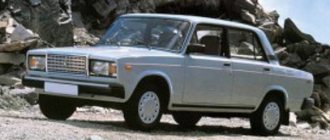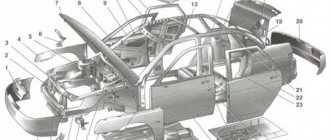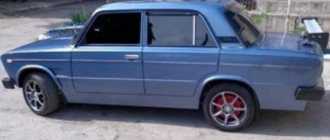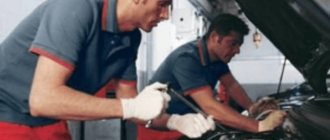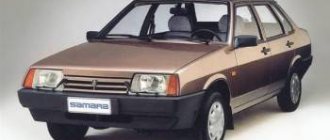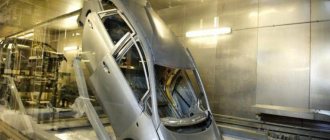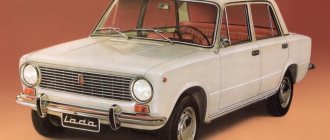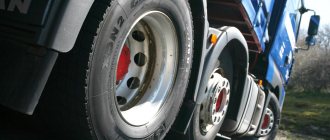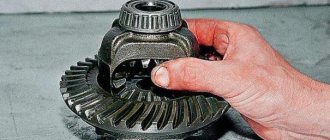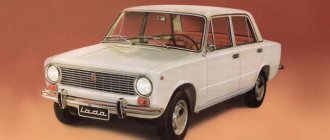VAZ 21099 body
The body of the VAZ 21099 differs from the body of the standard “nine” and “eight” in that it is made as a four-door sedan. Otherwise, it almost completely copies the skeleton of the “nine”. From the article you will learn how to modernize the frame by increasing torsional rigidity and using other methods.
Getting to know the body
The main part of the VAZ 21099 body is the frame. It includes several elements connected to each other by welding. The latter is mostly made with dots or seams, but those components of the frame that bear a large load are reinforced with an arc.
Frame
Thanks to its non-separable design, the frame or frame of the VAZ 21099 car is incredibly resistant to destruction and has sufficient rigidity. All the main units and components of the car are supported on it, including the attached parts of the body, as well as various interior components.
Attachment parts
Body parts of VAZ 21099 photos
As for the mounted parts of the body, these include those parts that are already connected with bolts or spot welding in some places (tack welding):
- Doors also belong to the hinged parts of the body. They come with sliding windows (side windows). The rear fixed glass has a distinctive slope inherent in VAZ models. The windshield is made of 3 layers and well polished;
Body hardware VAZ 21099
- “99” bumpers are installed in a classic way - front and rear. They are plastic, but have metal beams that significantly strengthen them;
- The seats are separate, have many adjustments, and headrests for safety. A comfortable driver's seat is installed. The rear sofa on the VAZ 21099 is not the same as that of hatchbacks and is structurally different.
VAZ 21099 body iron
Main differences and weight "99"
It will be interesting to know that the VAZ 21099 is a kind of modification of the “nine”, originally intended for export sales. Another name for the car is Lada Forma. Began production in 1990.
Body type VAZ 21099
In terms of its design features, the Lada Form is slightly different from the Lada Samara models. The main differences are in the rear of the body. As you know, instead of a fifth door, a trunk appeared here, like all classic sedans.
The VAZ 21099 turned out noticeably better than its predecessors. It showed enviable handling and high stability on the road, which was largely due to the well-designed body.
Just look at the ground clearance, which is 15 cm. For a convenient, comfortable ride on our roads, this is exactly what is needed. True, the ground clearance of the “99” is less than that of large crossovers and all-terrain vehicles, but if you take into account the light weight of the VAZ 2109, the advantages of the car are clearly visible. In addition, the ground clearance can be increased slightly if the wheels are “shod” with larger rims, although excessive zeal in this matter will clearly be out of place.
Note. Let us note, in particular, that the “99” body made it possible to get rid of the main drawback of all “Samarov” hatchback models, and for the most part the VAZ 2109 - the rapid contamination of the rear window in rainy weather.
In general, the ascetic “VAZ” body, due to its transformation into a sedan, allowed engineers to achieve a greater permissible load.
Strengthening the body of the VAZ 21099
People often ask on forums how much the body of the VAZ 21099 weighs? Indeed, it is very important to know this. A lot depends on the weight of the car, including dynamics, fuel consumption, etc. In this regard, the weight of “99” is practically no different from its predecessors. The curb weight of the car is 950 kg, but the body weighs about 250 kg (this is more than that of the “eight” and “nine”).
As for the overall dimensions, they, in fact, did not receive any obvious differences, apart from the length. It naturally increased by 200 mm, as a rear “sedan” overhang appeared. The exterior is the same, the interior too.
The luggage compartment allows the transportation of various cargoes. It is quite roomy, although loading things into such a high trunk is often difficult.
Benefits of renting a car
Modern cars use a lot of synthetic material to replace metal parts. But if you hand over a VAZ-2106 or other Soviet equipment, where not only all body elements were completely metal, but also their thickness was 1.5-2 mm, then this is somewhat more profitable. The first thing you can raise the price on is working spare parts and non-ferrous metal. And although there is little of it in any vehicle, it is quite possible that it will accumulate from other sources. If you estimate the advantage between selling the Volga or modern technology, it will clearly be on the side of Soviet cars.
Features of car recycling
Before you scrap your car, you should familiarize yourself with the principles of this procedure. The average weight of a vehicle is 1000 kg. If the entire car can be recycled, the collection point will deduct 30% for clogging. The latter includes all non-metallic elements, pollution, etc.
Let's consider how much a car for scrap metal weighs using the example of a VAZ 2105. The weight of the latter is 955 kg. Thus, taking away the blockage, we get about 660 kg. You should also take into account the price of scrap, which differs depending on the city. As a rule, in megacities, the number of rubles received for a car will significantly exceed the amount earned in a similar organization in a small locality.
Before calculating the profit from a scrapped car, you need to take into account transportation costs. If the car is a pile of metal, you need to take care of a tow truck. If there are spinning wheels and functional steering, the car can be transported in tow. Then, this expense item will not be so significant. Therefore, in order to calculate how much a Zhiguli costs when scrapped, it is not enough to know how much a VAZ 2109 or 21099 weighs for scrap metal (915 kg). It is necessary to take into account the features of recycling and the requirements of collection points. It would be useful to know the average cost of scrap metal in the region. Additional awareness will allow you to avoid fraud on the part of unscrupulous receivers.
Despite the fact that disassembling a car is a labor-intensive procedure, many owners still decide to take this step. Thus, you can sort ferrous and non-ferrous metals and hand them over separately, removing the good parts. From an economic point of view, the procedure will be justified.
Let's consider how much a VAZ 2106 weighs for scrap metal based on individual significant structural elements:
- body – about 300 kg;
- bridge – 52 kg;
- motor – 140 kg.
It should be noted that dismantling machine parts requires a lot of time and certain skills. In the absence of the latter, it would be more rational to recycle it entirely.
Weight of passenger cars in tabular format
We present to your attention a table that shows the weight of the car by brand.
| car model | Curb weight |
| Weight of the Oka 1111 car, weight of the Okushka | 635 kg |
| Weight of the car Oka 1113 | 645 kg |
| Weight of a VAZ 2101 car, weight of a penny | 955 kg |
| Weight of the VAZ 2102 car | 1010 kg |
| Weight of the VAZ 2103 car | 965 kg |
| Weight of the car VAZ 2104, weight of tens 2110 | 1020 kg |
| The weight of the VAZ 2105 car, the weight of the five | 1060 kg |
| Weight of the VAZ 2106 car, weight of the six | 1045 kg |
| Weight of the VAZ 2107 car, weight of the seven | 1049 kg |
| Weight of the VAZ 2108 car | 945 kg |
| Weight of the VAZ 2109 car, weight of the nine | 915 kg |
| Weight of the VAZ 2111 car | 1055 kg |
| Weight of a VAZ 2112 car, weight of a twelve-wheeler | 1040 kg |
| Weight of the VAZ 2113 car | 975 kg |
| Weight of the VAZ 2114 car, weight of the four | 985 kg |
| Weight of the VAZ 2115 car, weight of the tag | 1000 kg |
| Weight of the VAZ 2116 car | 1276 kg |
| Weight of the VAZ 2117 car | 1080 kg |
| Weight of the Niva 2121 car | 1150 kg |
| How much does a Chevrolet Cruze weigh (Chevrolet Cruze weight) | 1285-1315 kg |
| How much does a Chevrolet Niva weigh (Chevrolet Niva weight) | 1410 kg |
| How much does a GAZ (Volga) weigh, the weight of a Volga 24 | 1420 kg |
| How much does GAZ 2402, GAZ 2403, GAZ 2404 weigh? | 1550 kg |
| How much does GAZ 2407 weigh? | 1560 kg |
| Car weight Moskvich 314 | 1045 kg |
| Weight Moskvich 2140 | 1080 kg |
| Weight Moskvich 2141 | 1055 kg |
| Car weight Moskvich 2335, 407, 408 | 990 kg |
| How much does a UAZ 3962, UAZ 452 weigh, how much does a UAZ loaf weigh? | 1825 kg |
| How much does UAZ 469 weigh? | 1650 kg |
| How much does UAZ Patriot weigh? | 2070 kg |
| How much does UAZ Hunter weigh? | 1815 kg |
| How much does Nissan weigh (weight of nissan x-trail car) | 1410-1690 kg |
| How much does Qashqai weigh (weight of Nissan Qashqai car) | 1297-1568 kg |
| How much does Nissan Juke weigh (Nissan Beetle weight) | 1162 kg |
| Ford Focus car weight (how much does a Ford Focus weigh) | 965-1007 kg |
| Weight of the Ford Focus 2 car (how much does the Ford Focus 2 weigh) | 1345 kg |
| Weight of the Ford Focus 3 car (how much does the Ford Focus 3 weigh) | 1461-1484 kg |
| Ford Kuga car weight (how much does a Ford Kuga weigh) | 1608-1655 kg |
| Ford Escort car weight (how much does a Ford Escort weigh) | 890-965 kg |
| Weight of the Renault Logan car (how much does the Renault Logan weigh) | 957-1165 kg |
| Renault Duster car weight (how much does a Renault Duster weigh) | 1340-1450 kg |
| Renault Sandero car weight (how much does a Renault Sandero weigh) | 941 kg |
| Weight of the Opel Mokka car (how much does the Opel Mokka weigh) | 1329-1484 kg |
| Weight of the Opel Astra car (how much does the Opel Astra weigh) | 950-1105 kg |
| Mazda 3 car weight (how much does Mazda 3 weigh) | 1245-1306 kg |
| Weight of the Mazda CX-5 (how much does the Mazda CX-5 weigh) | 2035 kg |
| Mazda 6 car weight (how much does Mazda 6 weigh) | 1245-1565 kg |
| Volkswagen car weight (how much does a Volkswagen Tuareg weigh) | 2165-2577 kg |
| Weight of a Volkswagen Polo car (how much does a Volkswagen Polo weigh) | 1173 kg |
| Weight of the Volkswagen Passat car (how much does the Volkswagen Passat weigh) | 1260-1747 kg |
| How much does a Toyota Camry weigh (Toyota Camry weight) | 1312-1610 kg |
| How much does Toyota Corolla weigh (weight of Toyota Corolla) | 1215-1435 kg |
| How much does a Toyota Celica weigh (Toyota Celica weight) | 1000-1468 kg |
| How much does a Toyota Land Cruiser weigh (Land Cruiser weight) | 1896-2715 kg |
| How much does the Skoda Octavia weigh (Skoda Octavia weight) | 1210-1430 kg |
| How much does the Skoda Fabia weigh (Skoda Fabia weight) | 1015-1220 kg |
| How much does the Skoda Yeti weigh (Skoda Yeti weight) | 1505-1520 kg |
| How much does a Kia Sportage weigh (KIA Sportage weight) | 1418-1670 kg |
| How much does Kia Sid weigh (KIA Ceed weight) | 1163-1385 kg |
| How much does the Kia Picanto weigh (KIA Picanto weight) | 829-984 kg |
Thus, it turns out that if we take, so to speak, “in general for the hospital,” then the average weight of a passenger car is approximately from 1 to 1.5 tons, and if we talk about SUVs, then the whole weight already shifts from 1.7 tons to 2. 5 tons.
weight of a passenger car, how much does OKA weigh, how much does a car weigh, weight of a car, how much does a Matiz weigh, how much does a Matiz weigh, weight of a Skoda car, weight of an Audi
Modifications
Since the start of production, modifications with carburetor and injection engines with a working volume of 1.3 liters (VAZ-210993) and 1.5 liters (VAZ-210990) have been produced in different years. The model range of JSC AVTOVAZ includes modifications of the VAZ-21099 with carburetor and injection engines 210992 (VAZ-21099i). A version with permanent all-wheel drive (Lada-Victory) was also produced, but production was discontinued due to low sales. And the model with a turbocharged 8-valve engine (Lada Sport) was produced only by individual order.
Creation of front-wheel drive VAZ cars
The Volzhsky Automobile Plant produced the first car with front-wheel drive in 1984. It became a three-door hatchback under the designation VAZ-2108. Initially, the company developed three modifications of front-wheel drive small cars in the following bodies:
- VAZ-2108 – three-door hatchback;
- VAZ-2109 – five-door hatchback;
- VAZ-21099 is a four-door sedan.
The production capacity of the car plant did not allow the simultaneous production of all three modifications, so initially the 2108 model was put on the assembly line, as it had a simpler design than the VAZ-2109, and was lighter in weight and required less material consumption. These factors simplified the development of a new model range for the plant.
Serial production of the Lada Nine began in 1987, and the VAZ-21099 sedan only in 1990.
Main technical parameters and modifications of the VAZ-2109
The car was produced from 1987 to 2011. Such a long period of production of the small car was facilitated by a successful design, interesting design and the following technical characteristics (basic version):
- body – hatchback;
- number of doors – 5;
- capacity – 5 people;
- length – 4.01 m;
- width – 1.65 m;
- height – 1.40 m;
- ground clearance - 16.5 cm;
- trunk volume – 330 l;
- engine model – VAZ-21081;
- type – four-stroke, gasoline;
- configuration and number of cylinders – in-line, 4 pcs.;
- volume – 1.1 l;
- power – 54.0 l. With.;
- highest speed – 154.5 km/h;
- fuel - AI-93.
The total vehicle weight of the VAZ-2109 (basic version) is 915 kg, and the mass of the main units is:
- VAZ-21081 engine – 115.0 kg;
- gearbox – 25 kg;
- body – 300 kg;
- side door – 13 kg.
Basic reference dimensions for checking the body floor
| 0 | baselines |
| 1 | axis of the front bolts securing the front suspension braces |
| 2 | support center of the front suspension of the power unit |
| 3 | center support of the left suspension of the power unit |
| 4 | centers of the upper hinges of the front telescopic struts of the front suspension |
| 5 | front suspension arm hinge centers |
| 6 | points of intersection of the axes of the welded bolts securing the steering mechanism with the surfaces of the brackets |
| 7 | mounting points for the rear suspension mount of the power unit |
| 8 | points of intersection of the axes of the rear welded bolts securing the rear suspension arms with the surfaces of the rear side members |
| 9 | centers of the upper shock absorber mounts of the rear suspension |
Testing for deformation can be carried out using the following methods, succinctly called “old-fashioned”. They will help you get at least a rough idea of the condition of the metal frame of the VAZ 2108:
- Open and lightly slam all the V8 doors and the hood one by one. Don’t try to make every effort, act carefully. In case of insufficient, loose closing of the doors the first time, there is a curvature of the pillars. If the hood does not close tightly, it is recommended to check the side members for bending.
Note. The misalignment of parts may be only a few millimeters, but this is already a problem. So, when selling a car, the discovery of such a “jamb” will certainly lead to a reset of the initial price.
- Another inspection option involves a visual inspection of the side of the car. This way it will be possible to detect existing irregularities and increased gaps;
- Glass should also be subjected to visual inspection. If cracks are noticeable on them, especially vertical ones on one side, there is a curvature of the racks;
- Compliance is also checked while the vehicle is moving. So, the G8 driver is recommended to increase the gas on a good, flat road to 50 km/h, and then lower the steering wheel for a split second. If the car pulls in any direction, there is a displacement on that side. The same experiment should be carried out at a speed of 90 km/h.
An interesting video review on the topic of proper equipment for body restoration.
Technical characteristics of the VAZ 21099 body
| Body type | 4-door sedan |
| Length/width/height, mm | 4205/1650/1402 |
| Wheelbase, mm | 2460 |
| Front/rear wheel track, mm | 1400/1370 |
| Ground clearance, mm | 160 |
| Weight in running order, kg | 970 |
| Total weight, kg | 1395 |
| Body weight, kg | 258 |
| Wheel formula/drive wheels | 4x2/front |
Modernization
Since 1997, at the AvtoVAZ pilot production they began to simultaneously produce the VAZ-2115 model, which was a restyled version of the VAZ-21099 and the first car of the so-called Samara-2 family.
Since 1999, an option has appeared with a “Europanel” and “Eurosalon” from Samara-2.
At the end of 2004, the VAZ-21099 was discontinued by AvtoVAZ and completely replaced by the VAZ-2115 model, after which a license was purchased for the production of the model in Ukraine by ZAZ JSC. At the end of 2011, production of the VAZ-21093 (hatchback) and VAZ-21099 (sedan) was finally discontinued[5].
LADA Victory (VAZ 21099)
— the difference from the base model was that Victory was an all-wheel drive (4x4) car. The car was made according to this principle: they took a VAZ 21099, added a transmission, in particular an angular gearbox, a viscous coupling and a rear axle gearbox from a Volkswagen Golf Syncro, and the result was a VAZ 21099 Victory.
The axle shafts remained from the base model, one transmits torque from the engine to the rear axle, and two more serve to drive the front wheels. The exterior of the Victory differed from the basic modifications of the VAZ 21099 by a rear spoiler; the car was equipped with alloy, fourteen (14″) inch sports wheels and bright red “Victory” and “4×4” nameplates on the trunk lid.
The exhaust system was also changed on Victory, and the engine was installed with a volume of 1600 cm². Speaking about the technical characteristics of the car, we can note the good acceleration dynamics of the Victory, which is not surprising, because the engine was installed with a boost.
All-wheel drive provided the car with simply amazing maneuverability, but due to its cost, the VAZ 21099 Victory was not widely used, and production of the car was curtailed. The car was also exported to countries in Europe, Asia, Africa, North and South America.
Painting process
In the case where a car enthusiast has insufficient knowledge in the field of restoring an impeccable appearance, then it is worth starting with individual parts. Then gradually gain the necessary experience.
- I had to completely disassemble the interior, dismantle the doors, and also remove the handles, headlights and other loose parts. When the frame is ready, the preparatory work begins. It was necessary to clean out numerous areas of corrosion using sandpaper and a wire brush.
- Next, the most damaged surfaces were leveled using putty, primer and subsequent sanding. In some places, straightening was even required, aimed at ideally restoring the geometry of the body.
- After each action, it was necessary to clean the parts exposed to work from dust and other contaminants. This is necessary in order to achieve higher quality in the final result.
It is advisable to carry out any stages of the technical process in a pre-cleaned garage. Having previously prepared all the tools and materials needed directly for painting, so that you do not have to be distracted during the main event.
Parts that cannot be painted had to be previously protected with plastic film attached to the body with masking tape.
Once all the prep work was completed and the doors were individually painted, I began the main paint application. Using a spray gun, I applied first the first layer, then the second and finished with the third. Between each stage it was necessary to take a break to dry the applied layer.
The conclusion was the application of varnish, which acts as a protective layer and can give the body a new and more presentable appearance.
This had to be done in two layers, and when the car was finally completely dry, the dismantled components and parts were installed in place. After which the updated vehicle again became suitable for its impeccable operation.
Body reinforcement
Strengthening the body of the VAZ 21099
The body of the VAZ 21099 needs, whatever one may say, modernization. It was made at the factory as a simple body, not distinguished by any “tricks”. Let's not forget that in 1990, the entire automobile production of our country was still at the “Soviet” level and, accordingly, there was no advanced equipment there.
Many car enthusiasts began to bring the car body to the appropriate level, introducing foreign tuning ideas. You can still find ready-made “99” tuning kits on sale.
Note. For the most part, door handles, rear lights and bumpers were previously subject to tuning.
Recently, fans of this car have begun to tune the suspension. Instead of the standard classic suspension, they installed a sports one. The struts were installed with short strokes and had special springs. The ground clearance was also lowered, which made it possible to better corner and maneuver at medium and high speeds.
But tuning to increase torsional rigidity is especially important. What this will give, read below.
“Tweaking” body rigidity
Body reinforcement vaz 21099
The higher the body's torsional rigidity or quality of life, the better the car turns, makes maneuvers and maneuvers in city traffic. But if this body indicator is, so to speak, “smeared,” then it becomes impossible to carry out the above actions. In addition, the body deforms and twists faster, and the suspension begins to function not as it should.
When designing the body, the designers certainly took into account a number of factors affecting the quality of life during the operation of the vehicle. They could not help but mean weight, the operation of passive safety elements, and much more. But constant loads, general environmental deterioration, extreme driving conditions - all this has a bad effect on the metal base of the car. In this case, the modernization of the vehicle is definitely prescribed.
“99” needs tuning more than its other relatives, since the car body is a sedan. And as you know, sedans can withstand loads worse than hatchbacks, the metal of such a body “gets tired” faster, and welding points are destroyed soon. Also, the rigidity indicator and the number of doors are affected.
The quality of life of the VAZ 21099 is 5500 Nm/deg, which is 1300 Nm/deg less than the quality of life of the “nine” and 2700 Nm/deg less than the quality of life of the “eight”. The fact remains that the torsional rigidity of sedans is inferior to that of 3-door and 5-door hatchbacks.
Note. On VAZ sedans, the designers managed to increase the quality of life already on the “ten” and on the VAZ 21102. 8000 Nm/deg and 8400 Nm/deg, respectively.
Spacer
Spacer for VAZ 21099 and its effectiveness
Increasing the quality of life of the body with your own hands involves, first of all, the introduction of spacers. This device is capable of increasing the indicator several times, strengthening the body. Many tests have been carried out to prove the effectiveness of such amplifiers.
Note. In addition, thanks to the spacers, the degree of deformability of the body is reduced, which cannot but have a beneficial effect on the durability of the metal frame.
It is recommended to install a spacer of medium hardness on the VAZ 21099, but it must be from well-known companies; the products are stamped in a handicraft fashion, somewhere in a garage, which cannot be considered a plus. When installing the wrong, “left” strut, there is a risk of not only wasting time and money, but also deteriorating the performance of some vehicle components.
Most often, front-wheel drive models are equipped with a front strut, but sometimes it wouldn’t hurt to install a rear strut. It can significantly strengthen the rear pillars, and the entire rear of the sedan. True, such a spacer is more necessary for Vases of recent years of production, in which the rear sofa serves as body rigidity.
So, the strut can increase the quality of life of the body by 25 percent, which will turn the standard 5500 Nm/deg into 5720 Nm/deg, which is already good.
Other Upgrade Methods
Along with installing spacers on the VAZ 21099, it is also important to introduce other devices that increase body rigidity. Here are the types of tuning known in this area, except for installing a spacer.
- Front shield reinforcement
- Subframes
- Roll cage
- Bottom brace
Also watch an interesting video about strengthening the threshold at the place where the jack is installed on the VAZ 2109 and 21099
What is body geometry?
Content
Body geometry is a specific system in which all parts and elements of the body are located exactly the same, according to the geometric pattern specified at the factory by engineers. Think about how much work they had to do to draw the design of the future car, because the slightest discrepancy in size or shape would lead to a defect.
Body dimensions for VAZ 21083
It is easy to understand a simple truth: every part of the car must have a certain shape. No matter how trivial it may sound, but, for example, if the contact marks of the car’s wheels with the road surface were not rectangular, then when driving the vehicle would deviate along the course, which of course is already bad.
Same for other details. If their shape is disturbed, they become distorted, unnecessary forces arise, which require additional energy to overcome. As a result, using the same wheels as an example, tires wear out faster, fuel consumption increases, and handling deteriorates, which inevitably leads to emergency situations and a decrease in safety.
Modified body geometry is always bad, especially when weather conditions worsen or in emergency situations, when it is necessary, for example, to brake sharply or make a maneuver. It is clear that a deformed body in these cases will be worse than a bomb planted under the hood.
The geometry can be disrupted due to quite ordinary situations. Well, I accidentally ran over a curb because I was just studying. Yes, no one will scold you, dear driver, but you will have to check the body, since in most cases such a collision affects the wheel alignment or, simply put, wheel alignment.
Today, restoring the original condition of the body is a problem for many vehicle drivers. The owners of the G8 are no exception in this regard. Despite belonging to the domestic automobile industry and being related to the tank “classics”, the models produced in the Samara line are no longer so powerful in terms of bodywork. Yes, the Vases of recent years are much more modern, lighter, but also noticeably “gentler”.
Engine dismantling
You can reduce the weight of the power plant if you remove it without:
- Gearbox (its weight is about 30 kilograms);
- a head weighing approximately 10 kilograms.
As a rule, at service stations, power units are removed assembled with the gearbox, while during self-repair, dismantling is carried out without attachments. Let's give an example of engine dismantling, which is described in the car's operating instructions. The peculiarity of the work in this case is that the engine is removed through the bottom of the car. The manufacturer recommends not to disconnect the box from it, but to install the car itself on a lift.
- Disconnect the terminals and then remove the battery.
- Drain the coolant and engine oil.
- Remove the crankcase protection.
- Disconnect the muffler and remove the air filter.
- Loosen the brake booster hose clamp that leads to the powertrain inlet pipe.
- Unhook the ground from the crankcase; to do this you will need to unscrew the fasteners.
- Remove the high-voltage wire from the central contact of the distributor cover.
- Using a screwdriver, turn the spring clip and remove the block with the wires coming from the contact socket of the distributor.
- Remove the fuel hose.
- Remove the clutch cable end from the clutch drive lever.
- Disconnect the wires from the traction relay, from the generator output and from the carburetor shut-off valve.
- Disconnect the air supply hoses to the throttle and the fuel hoses leading to the carburetor.
- Remove the spring from the throttle actuator.
- Remove the speedometer and accelerator drive cables from the valve covers.
- Unhook the block with the wire from the economizer, remove the oil pressure and liquid temperature sensors in the cooling system.
- Remove the heater outlet hose and transmission drive rod.
- Next, you will need to disconnect the remaining conductors from the box and move the drive shafts to the side.
- After the steering rod and other parts are disconnected, place a stand under the engine and unscrew the nuts of the rear mounting support, then the right front and left.
Before lowering the engine, check that you have disconnected everything from it. In order to remove the engine from under the car, you need to lift the front part of it.
Weaknesses of the VAZ-2106 engine
The engine of the VAZ-2106 car is a modification of the power unit from the Troika. It is quite possible that this is why its design retained a number of weak points of its predecessors. Domestic craftsmen have learned to diagnose engine problems almost by sound. As an example, we will give several symptoms of breakdowns, and also tell you which engine elements could fail:
- The appearance of loud knocking noises at idle clearly indicates the need to adjust the valves. Under normal operating conditions, this problem usually occurs no more often than once every 7-10 thousand kilometers;
- The occurrence of metal-on-metal knocking indicates that the connecting rod bearings or piston pins are worn out. Both faults must be corrected immediately to prevent serious damage to the power unit;
- the so-called ceramic knock may indicate that the pistons of the VAZ-2106 have failed. You can still get to a car service center with such a breakdown, but it’s definitely not recommended to travel around the city and beyond;
- extraneous sounds in the lower part of the engine, which are accompanied by a sharp drop in the oil level - this is a clear sign of problems with the main bearings. In this situation, it is better to immediately use the services of a tow truck, since an independent trip even a short distance is fraught with major troubles.
In addition, quite often VAZ-2106 owners encounter the following carburetor and ignition system malfunctions:
- insufficient or, on the contrary, excessive fuel enrichment;
- throttle problems;
- failure of a high-voltage wire;
- moisture entering the ignition coil insulator;
- spark plug wear.
All these malfunctions, with experience, can be eliminated in no time - you just need to remove the damaged unit, disassemble it and, accordingly, replace the worn parts.
Weight VAZ 21099
The VAZ 21099 21099 1.3 MT sedan with a driver, a filled fuel tank, and the required amount of consumables weighs 970 (kg).
Common data:
- Car manufacturer: AvtoVAZ (Russia).
- Car class: small group II.
- Layout: front-engine or front-wheel drive.
Model range:
Curb weight of the sedan:
- VAZ 21099 21099 1.3 MT (1990 - 2005): 970 (kg).
- VAZ 21099 21099-20 1.5 MT (1994 - 2005): 970 (kg).
Permissible gross weight of the sedan:
- VAZ 21099 21099 1.3 MT (1990 - 2005): 1395 (kg).
- VAZ 21099 21099-20 1.5 MT (1994 - 2005): 1395 (kg).
Important: the front-wheel drive sedan VAZ 21099 21099 1.3 MT with a driver and four passengers, maximum permissible cargo, equipment, fuel, consumables weighs 1395 (kg).
Other parameters of VAZ 21099:
| Total weight of the car VAZ 21099 | |||
| General view General view of the car | Curb weight min (kg) Minimum vehicle weight for different modifications of VAZ 21099 | ||
Data are presented in kilograms (kg)
Caution: the above data are official figures from manufacturers, however, please note that the information is for reference only and does not guarantee absolute accuracy.
Source
